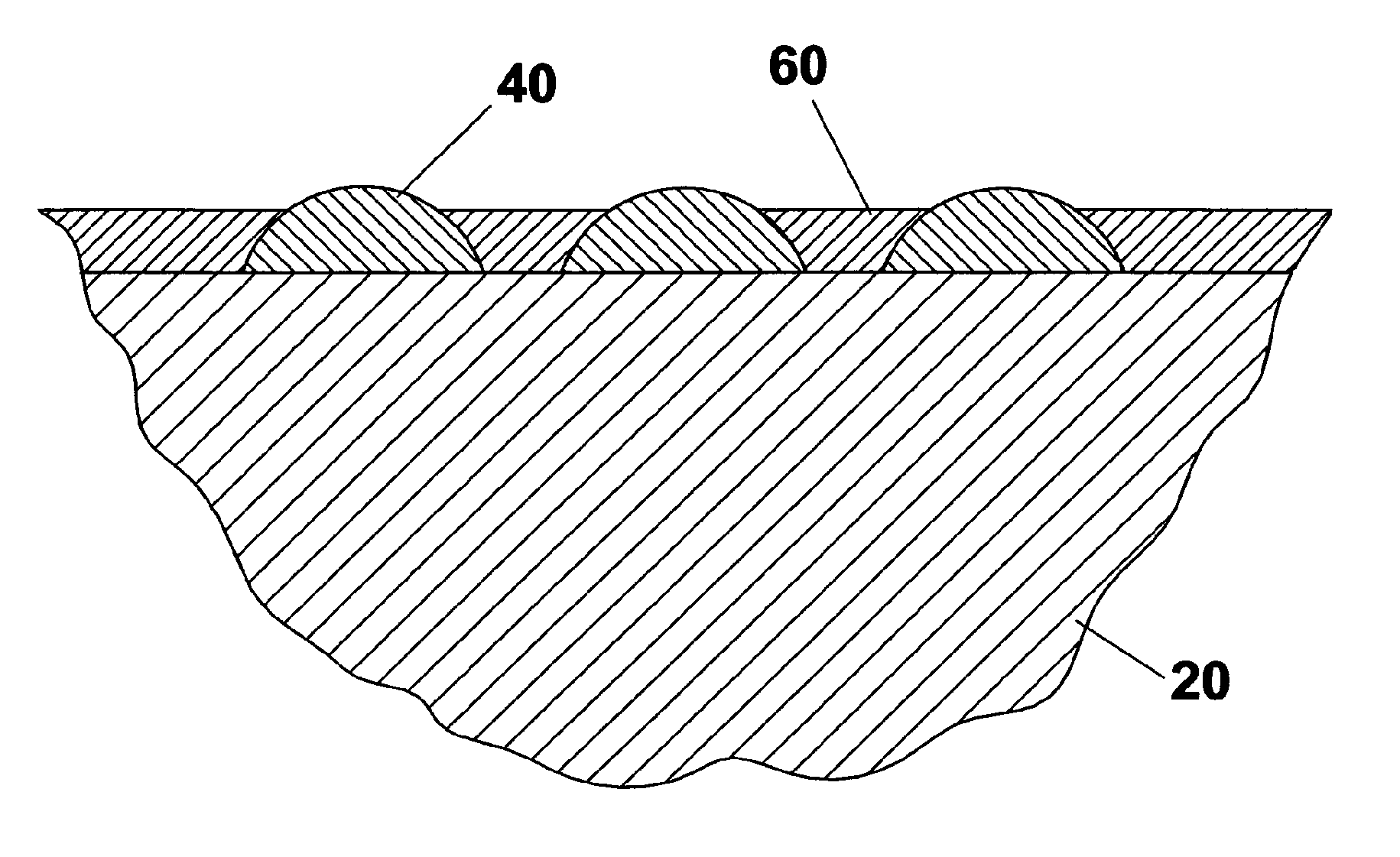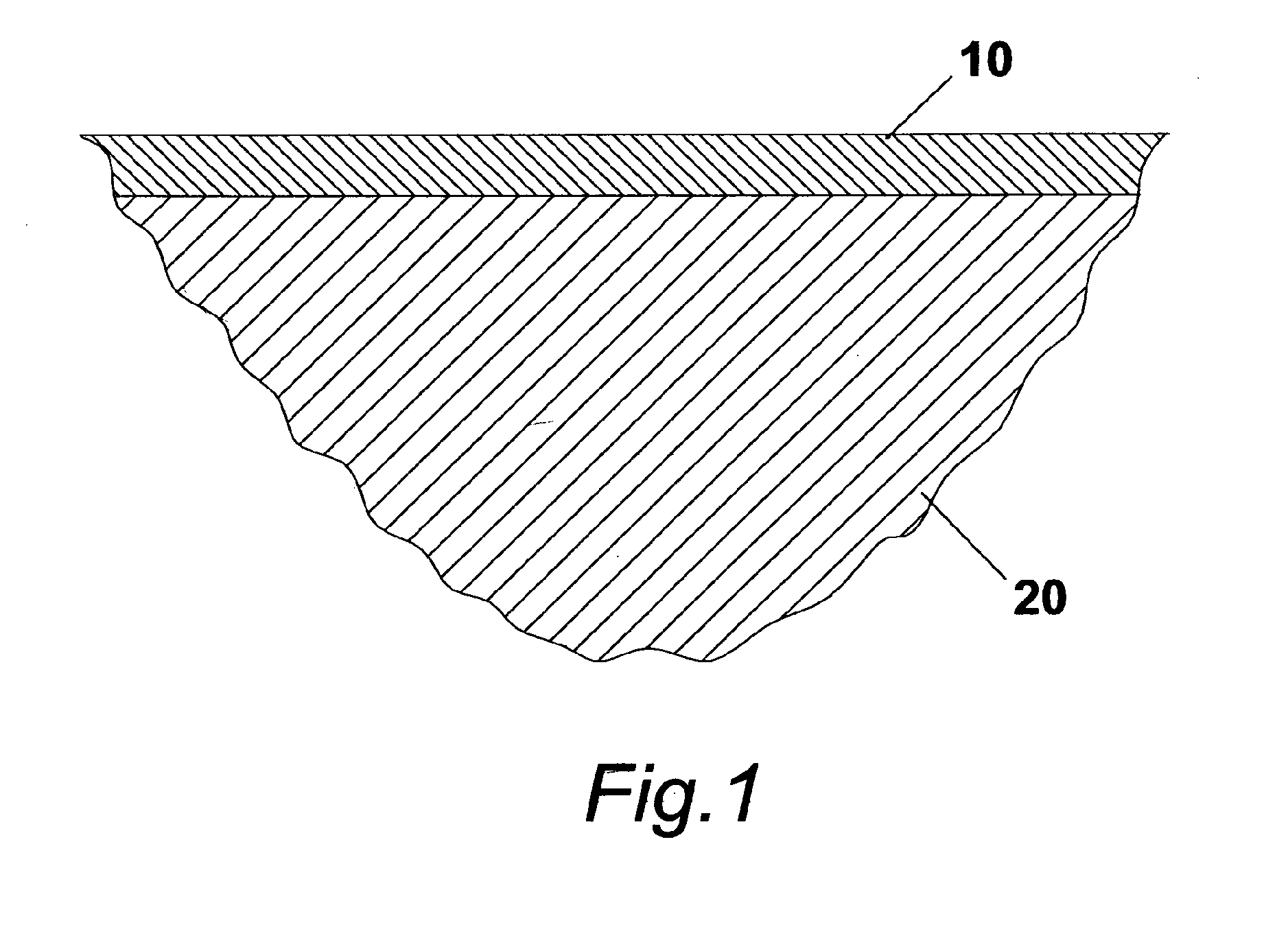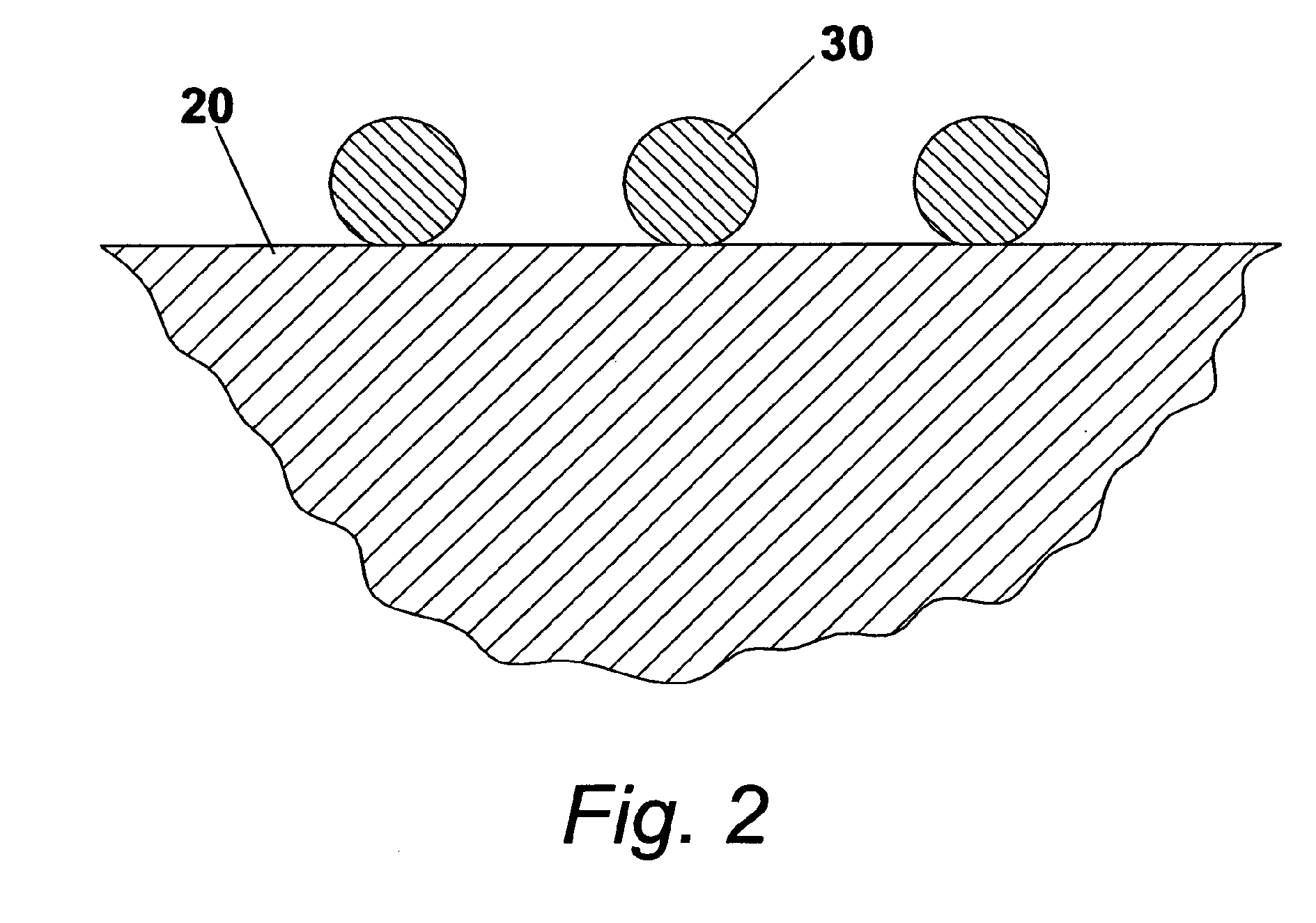Continuous or discrete metallization layer on a ceramic substrate
- Summary
- Abstract
- Description
- Claims
- Application Information
AI Technical Summary
Benefits of technology
Problems solved by technology
Method used
Image
Examples
example 1
[0048]Approximately 50 by 50 by 0.65 mm AlN substrate available commercially, with specified thermal conductivity of 170 W / mK was placed in a quartz tube furnace and heated up to 1150 degrees Celsius in high purity oxygen atmosphere at a heating rate of 600 degrees Celsius per hour. It was held at that temperature for 24 hours in order to form an alumina oxide layer on the substrate surface and then slowly cooled down to room temperature at a natural cool down rate of the furnace.
[0049]After oxidizing heat treatment a 1 micrometer thick copper coating was deposited on one of the substrate faces using thermal evaporation technique. Next the substrate was placed into a quartz tube furnace and heated up to 1090 degrees C. in high purity nitrogen atmosphere at a heating rate of 600 degrees C. per hour. It was held at that temperature for 15 minutes, so that the copper layer on ceramic surface had time to melt and break down into liquid copper droplets shaped as a dome with a contact ang...
example 2
[0050]Approximately 50 by 50 by 0.65 mm AlN substrate available commercially, with specified thermal conductivity of 170 W / mK was placed in a quartz tube furnace and heated up to 1150 degrees Celsius in high purity oxygen atmosphere at a heating rate of 600 degrees Celsius per hour. It was held at that temperature for 24 hours in order to form an alumina oxide layer on the substrate surface and then slowly cooled down to room temperature at a natural cool down rate of the furnace.
[0051]After oxidizing heat treatment one face of the substrate was subjected to kinetic spray deposition of copper layer. Deposition was carried out using 20 microns average particle size 99.9% pure copper powder and air jet at 200 degrees C. temperature. Deposition resulted in formation of approximately 1-3 micrometers thick copper metallization layer.
[0052]Next the substrate was placed into a quartz tube furnace and heated up to 1090 degrees C. in high purity nitrogen atmosphere at a heating rate of 600 d...
PUM
| Property | Measurement | Unit |
|---|---|---|
| Temperature | aaaaa | aaaaa |
| Fraction | aaaaa | aaaaa |
| Angle | aaaaa | aaaaa |
Abstract
Description
Claims
Application Information
 Login to View More
Login to View More - R&D
- Intellectual Property
- Life Sciences
- Materials
- Tech Scout
- Unparalleled Data Quality
- Higher Quality Content
- 60% Fewer Hallucinations
Browse by: Latest US Patents, China's latest patents, Technical Efficacy Thesaurus, Application Domain, Technology Topic, Popular Technical Reports.
© 2025 PatSnap. All rights reserved.Legal|Privacy policy|Modern Slavery Act Transparency Statement|Sitemap|About US| Contact US: help@patsnap.com



